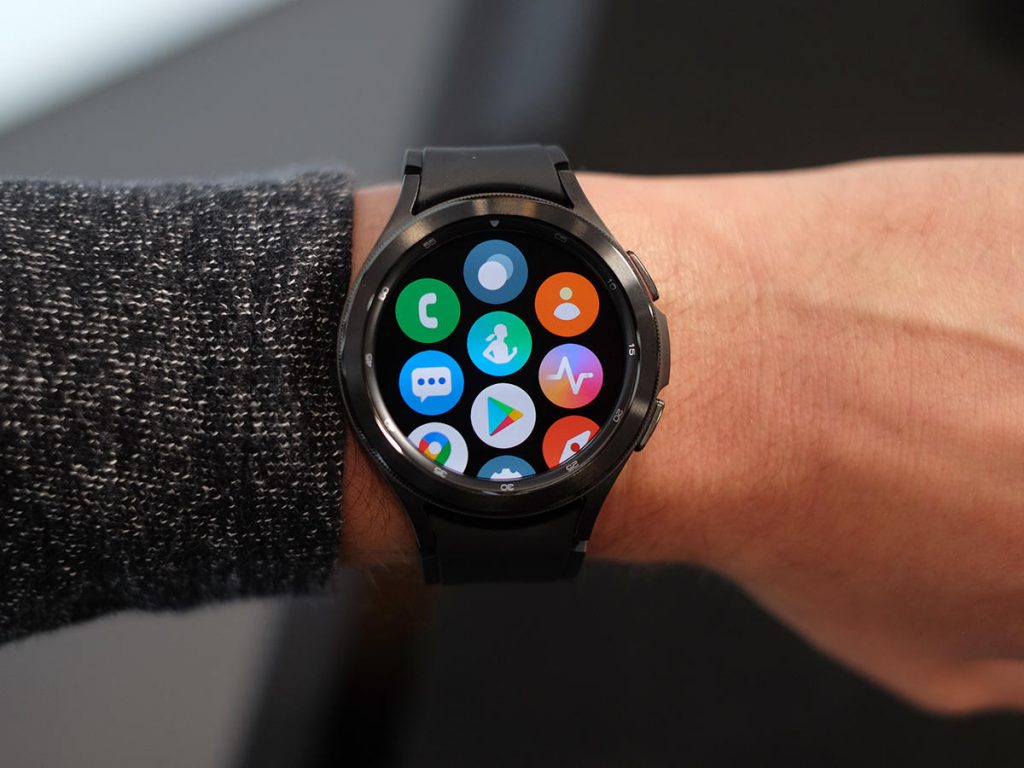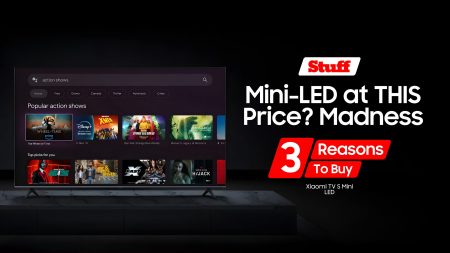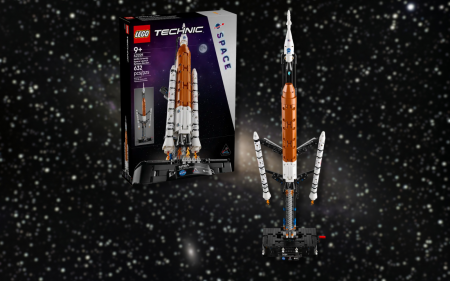Last night Samsung announced the Galaxy Watch 4 lineup and, on first glance, you might think that it’s just more of the same from the company. That’s not the case.
Samsung’s finally gotten together with Google to create a Wear OS watch, ditching their Tizen system (which was great) for something that plays a little nicer with every other Android device on the planet. It’s also reinvigorated Wear OS in the process, making this an Android-powered piece of premium kit we’re awfully close to wholeheartedly recommending to anyone who’ll listen.
What are we looking at?
 There are four version of the Galaxy Watch 4 in total: The standard Watch 4, which has a flat glass screen and ships in 40mm and 44m sizes, and then the Watch 4 Classic, which throws in a rotating bezel and arrives in two larger (42mm and 46mm) sizes.
There are four version of the Galaxy Watch 4 in total: The standard Watch 4, which has a flat glass screen and ships in 40mm and 44m sizes, and then the Watch 4 Classic, which throws in a rotating bezel and arrives in two larger (42mm and 46mm) sizes.
All of them will have the option to snag an eSIM version, which will work on both Vodacom and MTN’s networks (for the moment — more may be announced later) if you’re willing to pay a little extra for the privilege. The Watch 4 replaced the Galaxy Watch Active 2, which the Watch 4 Classic replaces the Galaxy Watch 3. Yes, it’s confusing. But yes, that’s also fine.
Connect four
 How do you choose between the four Galaxy Watch 4 models? That’s a slightly difficult ask, even after we’ve had a bit of a play. The Classic models, which will be more expensive, feature a rotary bezel that acts as a control method in addition to the touchscreen and physical buttons in the standard Galaxy Watch 4. It’s fantastic to use, but not essential.
How do you choose between the four Galaxy Watch 4 models? That’s a slightly difficult ask, even after we’ve had a bit of a play. The Classic models, which will be more expensive, feature a rotary bezel that acts as a control method in addition to the touchscreen and physical buttons in the standard Galaxy Watch 4. It’s fantastic to use, but not essential.
All of Samsung’s newest feature stainless steel frames, toughened glass screens and, in our fiddling units, silicon straps. There will be leather bands available, if you’re more fond of the ‘watch’ side of a smartwatch. The 450 x 450 resolution on the Watch 4’s Super AMOLED are as sharp as that annoying kid you remember from high school with all the answers — expect a better experience than the Watch 3’s 360 x 360 screen, obvs.
Interface of the company
 Take this how you like, but we mean it in a good way. The Galaxy Watch 4’s interface is very similar to that found in the Watch 3. Swiping on the touchscreen display, or rotating the bezel if you’re using a Classic, sends you through screens that let you access shortcuts and features. It’s all very familiar.
Take this how you like, but we mean it in a good way. The Galaxy Watch 4’s interface is very similar to that found in the Watch 3. Swiping on the touchscreen display, or rotating the bezel if you’re using a Classic, sends you through screens that let you access shortcuts and features. It’s all very familiar.
But since Samsung is the only company making watches using the new Wear OS 3 (which merges Tizen and Wear OS), we don’t yet know how much of this will turn up on other devices and how much is exclusive to Samsung’s OneUI interface. We’ll have to wait and see, but it’ll have an impact on Android smartwatches in general. Developers now have a single platform to work on, so whether you’re using a Samsung, Fitbit or other Android wearable, you’ll know what you’re getting from your apps. Developers should be happy about the reduced workload too.
Which will hopefully see more Wear OS apps being developed, since three versions of each won’t have to be made. Time will tell if that actually happens, but we’re already pleased with what Samsung has to offer here. Offline Spotify, Bluetooth, fitness features — that’s all we’ve ever wanted and that’s what we have here.
Survival of the fitness
 The next major Fitbit is also going to rock Wear OS, so it’ll probably look similar in terms of software, but there are loads of Samsung-specific features here. Samsung Fit is probably the best of the lot, offering a huge number of workout modes and some slick additions to its running mode in particular. Gait analysis comes over from the Watch 3, there’s a Running Coach, a rep-counter for the gym-rats from Fourways, and more besides.
The next major Fitbit is also going to rock Wear OS, so it’ll probably look similar in terms of software, but there are loads of Samsung-specific features here. Samsung Fit is probably the best of the lot, offering a huge number of workout modes and some slick additions to its running mode in particular. Gait analysis comes over from the Watch 3, there’s a Running Coach, a rep-counter for the gym-rats from Fourways, and more besides.
Body Composition is all-new, and works a bit like an ECG. You put two fingers on the metal buttons, the Watch 4 sends some electricity though your frame and calculates how much your fat, muscle and bones each weigh. It works like a body fat scale, only you’ll break this one if you stand on it. Initial tests suggest that the water and bone density calculations might vary but body fat is pretty spot on… sadly. Still, now you can get weight, BMI, VO2 Max, resting heart rate and body fat percentage on your wrist.
The Galaxy Watch 4, according to Samsung, will also let you interact with workouts on your Samsung TV, though we’re not sure if this Apple Fitness+ knockoff will actually turn up in South Africa. If it does, we’ll be sure to give it a shot.
Which brings us to battery. Samsung says you’re in for 40 hours on a charge, which isn’t much of an uptick at all and you’re likely to get better performance from a Watch 3 at this point. Just a little bit more, and every little bit helps.
Watch 4 the competition
 You’ve probably see something very like the Galaxy Watch 4 and Watch 4 Classic before. In terms of design, they’re rather similar to the Galaxy Watch Active 2 and the Galaxy Watch 3, what with their steel construction and round faces. But underneath the skin, OneUI has the potential to make one of these a long-terms purchase, unless this Samsung-Google crossover doesn’t pan out.
You’ve probably see something very like the Galaxy Watch 4 and Watch 4 Classic before. In terms of design, they’re rather similar to the Galaxy Watch Active 2 and the Galaxy Watch 3, what with their steel construction and round faces. But underneath the skin, OneUI has the potential to make one of these a long-terms purchase, unless this Samsung-Google crossover doesn’t pan out.
Samsung’s body composition monitor is perhaps the newest feature in this wearable crop, using electrical signals to tell you exactly how much you need to get up off that couch. It’s a nice-to-have but if you’re already rocking a Galaxy Watch 3, we suspect you might be able to look forward to a longer battery life.
If you’re looking at what’s further afield, the Apple Watch Series 6 is clearly Samsung’s main target. Which, to be fair, isn’t hard to see. Apple’s device swings a big… er… stick with the best smartwatch apps, a great heart rate sensor and ECG — which is also present in the Galaxy Watch 4. Apple’s device is lacking body composition, however, and Samsung’s device might actually have better fitness features. Until Apple’s next software update, anyway.
Samsung Galaxy Watch 4: Initial Impressions
 If you’re a fan of Samsung’s Tizen-powered offerings, you’re probably going to be just as (or even more) pleased with its jump to Wear OS… unless, that is, you recently bought yourself a Galaxy Watch 3. Knowing that Tizen is on the way out might grate, just a little.
If you’re a fan of Samsung’s Tizen-powered offerings, you’re probably going to be just as (or even more) pleased with its jump to Wear OS… unless, that is, you recently bought yourself a Galaxy Watch 3. Knowing that Tizen is on the way out might grate, just a little.
But you’re getting the best of both worlds here — Samsung’s excellent hardware and fantastic software design paired with better support for third-party apps thanks to the new Google partnership is a hard combination to beat. If you’re looking at a new Samsung smartwatch, this should definitely be your first port of call — unless the price for the last generation absolutely craters.




